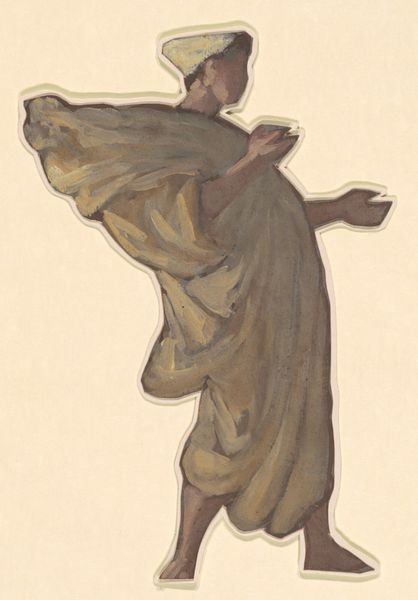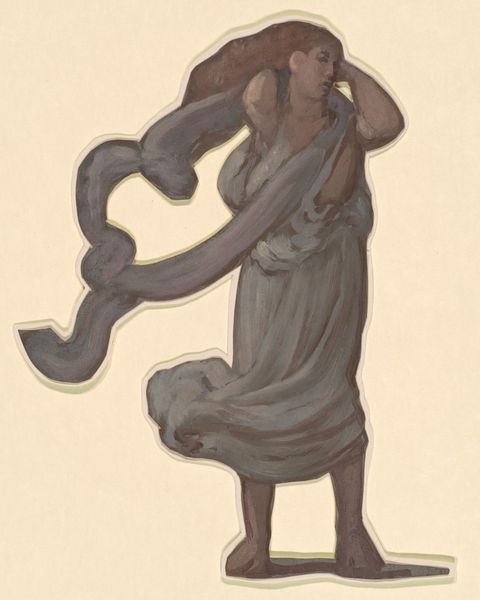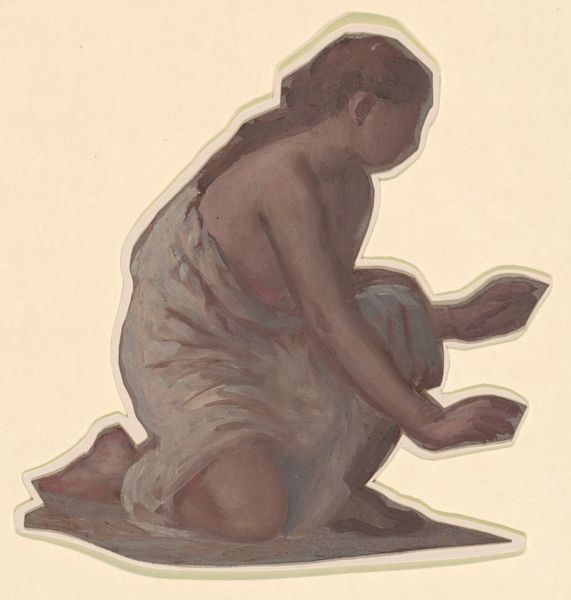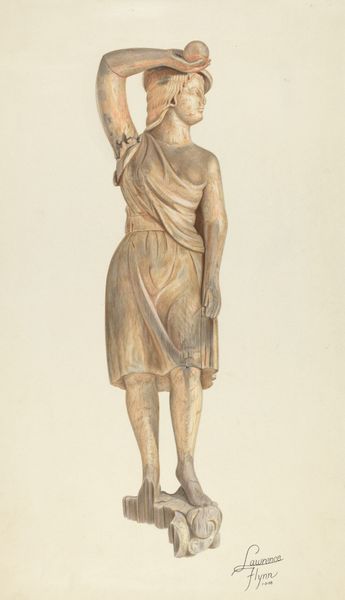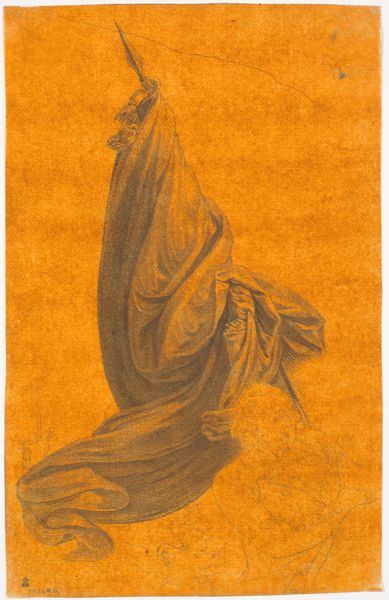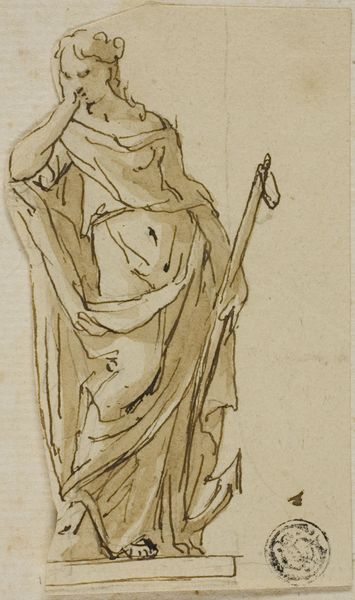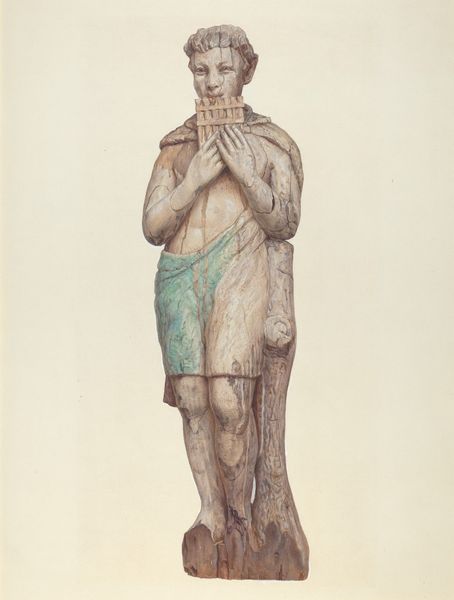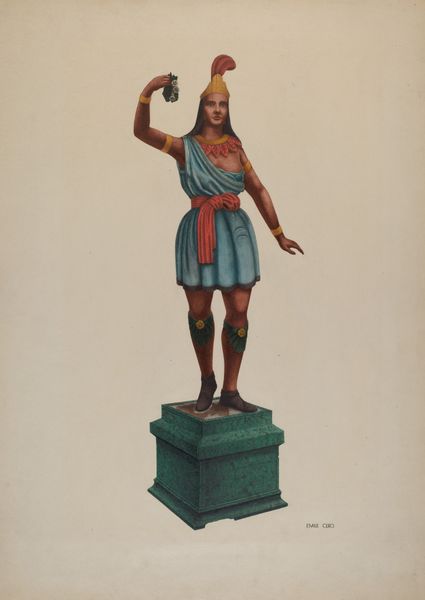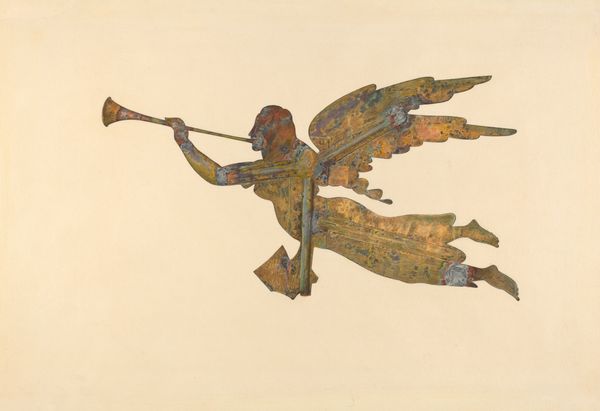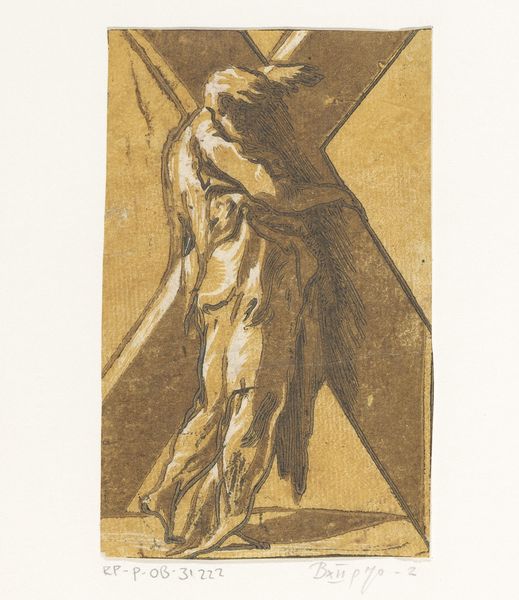
Dimensions: sheet (irregular): 20.96 × 19.69 cm (8 1/4 × 7 3/4 in.)
Copyright: National Gallery of Art: CC0 1.0
Curator: Editor: This is Elihu Vedder's "Study for 'Greek Girls Bathing'," circa 1872, a painting and drawing rendered in watercolor. I'm really struck by the muted colors and how they give the piece a very ethereal feel, almost like a memory. What strikes you most about this study? Curator: What I find interesting here is considering the material process that gives form to these classical ideals. Vedder’s use of watercolor, a relatively accessible medium, to depict idealized Greek figures points to a specific relationship between material and subject. The ephemeral nature of watercolor itself contrasts with the permanence often associated with classical sculpture and themes. How does this interplay of medium and subject speak to broader societal values and production? Editor: That's a great point! So you're suggesting the choice of watercolor wasn't just about aesthetics but also a statement about access and perhaps a critique of the monumentalization of classical art? Could Vedder be subtly democratizing the Greek ideal through his choice of material? Curator: Precisely! Consider the social context: industrialization was rapidly changing the means of artistic production and consumption. Watercolor, with its ease of use and relative affordability, made art accessible to a wider audience. Vedder's choice could be seen as a deliberate attempt to engage with this new landscape, perhaps even critiquing the elitism of academic art by embracing a more 'common' material. What does this mean when thinking about Vedder’s choices, who the work may have been for, and what they might have seen or bought at the time? Editor: It reframes the artwork completely. It's no longer just a romantic scene, but a commentary on the changing art world. Now, when I look at the quick, fluid brushstrokes, it speaks to the immediacy and availability of artmaking during that time. Curator: Exactly! It is so crucial to understand how the art production affects consumption of artistic works, so we can engage beyond the image portrayed. Editor: I’ve never considered Romanticism that way. That’s helpful!
Comments
No comments
Be the first to comment and join the conversation on the ultimate creative platform.
